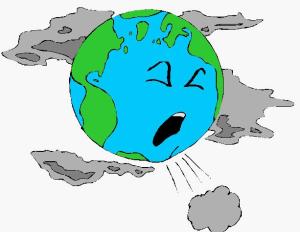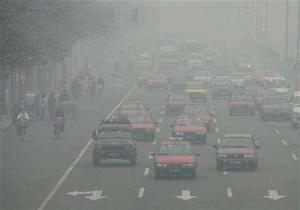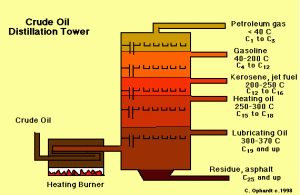Application of chemistry in Medicine.
The labels of medicines show the amounts of the different ingredents eg iron tablets may contain 200mg of iron or a painkiller may contain 500mg of paracetamol.How accurate are they?
Measuring the active ingredients in medicines can be achieved by titration and other simple laboratory techniques.But these are not reliable enough especially when working with medicines that are needed in micrograms or where an overdose might be harmful.Quality control in the pharmaceutical industry is ensured in a number of ways.The precise quantities of ingredients for any batch of medicine are measured and recorded.Then random samples from each batch are selected and tested. The tablets or other medicines are crushed if necessary and dissoved in a known solvent often methanol.This is filtered and then diluted.Standard solutions are made accurately using pure active drug to a precise concentration.Both the random samples and the standard solution are passed through a high performance liquid chromatograph (HPLC) and the quantities are compared.
HPLC is widely used to check the quantities of active ingredients in medicines.The result of this process show if the avearge content of the medicine lies within the accepted limits of variation.
Pollution and the Environment.

Earth Pollution
Chemistry has turned out to be the best thing that has ever happened to man kind. But have we ever sat down to think about the negative side of chemistry? Activities and the product of chemistry have brought a lot of pain to humans and it has also made the environment inconvenient for animals and all living things.
The combustion of alkanes in the form of fossil fuels drives most of the great economies of the world.One of the the major uses of fossil fuels is in the internal combustion engine that powers road vehicles.Public attitudes to the car are changing and more people are now questioning the use of the car.Cars are one of the major polluting agents on planet Earth,but using a car has become so convenient and even necessary that is difficult for individuals to see the collective damage that each journey is doing.The advantages of restricting motor vehicle use are to society as a whole; the disadvantages are all personal.This balance of personal and public good has to be addressed in all the arguments over how to make the car more environmentally acceptable.
The main question we ask ourselves is What’s the problem?

Car pollution
In a car engine,hydrocarbon combustion is not always complete and so carbon monoxide is formed along with carbon dioxide.Carbon monoxide is not only a greenhouse gas but is also highly toxic as it combines with the haemoglobin of the blood more effectively than oxygen,preventing the blood from carrying oxygen around the body.Oxides of nitrogen and sulphur are also produced from impurities in the fuel and these cause acid rain and smog if they are not removed from the exhaust fumes.Catalytic converters convert carbon monoxide and nitrogen oxides into less harmful gases,but cannot remove the carbon dioxide.
The quantity of pollution produced today is too great to be absorbed by the atmosphere without an adverse effect on the environment.How is this effect felt?
Increased levels of carbon dioxide in the atmosphere are thought to be causing global warming,with resultant changes in weather patterns.Any process that adds to the level of carbon dioxide or other greenhouse gases is therefore a problem.
CO2 is a good transmitter of sunlight, but partially restricts infrared radiation going back from the earth into space. This produces the so-called greenhouse effect that prevents a drastic cooling of the Earth during the night. Increasing the amount of CO2 in the atmosphere reinforces this effect and is expected to result in a warming of the Earth’s surface. Currently carbon dioxide is responsible for 57% of the global warming trend. Nitrogen oxides contribute most of the atmospheric contaminants.
Chlorofluorocarbons also known Freons are greenhouse gases that contribute to global warming.Sprays cans,discarded or leaking refridgeration and air conditioning equipment and the burning plastic foam products release CFCs into the atmosphere.This contribute to global warming by lowering the average concentration of ozone in the stratosphere.Chloroflurocarbons move up to the stratosphere gradually over several decades.Under high energy ultra violent(UV) radiation,they breakdown and release chlorine atoms,which speed up the breakdown of ozone (O3) into oxygen gas (O2).
Smog is created by burning coal and heavy oil that contain sulphur impurities in power plants and industrial plants.Its consits mostly of a mixture of sulphur dioxide and fog.Suspended droplets of sulphuric acid are formed from some of the suphur dioxide and a variety of suspended solid particles.Burning of large amounts of coal and heavy oil without control can result in large-scale problems.The high level of smog in the air can cause accidents on the road because one cannot see clearly on the road,eye irritation and breathing problems.
Increased amounts of greenhouse gases in the atmosphere lead to an increased greenhouse effect.Predicted outcomes of global warming include the melting of the polar icecaps causing a rise in sea levels and the loss of low-lying regions of many countries.It is also suggested that relatively small changes in global temperature could bring about major shifts in climate,destroying the present pattern of world food production as many currently fertile countries become barren deserts.Whether these predictions hold true remains to be seen.It is easy to blame any unusual weather conditions on global warming but history reveals similar events centuries ago.However,the evidence of a real problem seems to be mounting and there is a growing consensus among scientists that rising levels of greenhouse gases in the atmosphere do pose a real threat to the future well-being of the planet.At present,all we can do is act to reduce or avoid adding to the current levels of greenhouse gases and then wait and see.
Why do onions make you cry?

Have you ever wondered why you cry when chopping onions.well chemsitry can explain this phenomenon.This is part of chemistry around us in our daily lives trying to explain why certain things are the way they are.
Inside the onion cells there are some chemical compounds that contain sulfur. When you cut an onion its cells are broken and those chemical compounds then undergo a reaction that transforms them into a more volatile sulfured products, which are released into the air.
These sulfured compounds react with the moisture in your eyes forming sulfuric acid, which produces a burning sensation. The nerve endings in your eyes are very sensitive and so they pick up on this irritation. The brain reacts by telling your tear ducts to produce more water, to dilute the irritating acid. So you cry to keep your eyes protected from the acid.
What does Chemistry offer to ensure Quality of Life!!!
Chemistry didn’t just begin today, it existed even in the days of our ancestors. Life has been affected by chemistry both in the positive and negative way. In the present day we can all enjoy the benefits of chemistry in one way or the other.
Food is a basic need or requirement in order to live.Without chemistry cooked food will go bad with time.Knowledge and application of chemistry has led to preservatives to be made which prevent decomposition of food by microbial growth, refrigerator to be manufactured.Also Cultivation with fertilizers which improve yield, pesticides to control pest and other things.
Can there be life without food? 

I have thought of what life would be like without chemistry and its obvious it would be so miserable and unbearable. All over the world there are different climatic conditions; different seasons: winter, summer. During winter its really cold, some places extremely cold that we can hardly walk out comfortably. The invention of room heaters has gone a long way in solving this problem, even water heaters which supply us with hot water to bath with. Apart from the cold when the weather is hot, chemistry also plays a role: Air conditioners has a vital role to play here, we can stay in our offices, classrooms and even at homes comfortably. CHEMISTRY A FRIEND INDEED!!!
CHEMISTRY A FRIEND INDEED!!!
Chemistry in Transportation
Chemistry has made life much easier in the aspect of transportation . Civilization brought in the invention of cars, air craft and other means of transportation which facilitate the movement of human and goods from one place to the other. These vehicles are powered by products of fractional distillation of crude oil. Fractional distillation is a chemical process where by a hydrocarbon is broken down into fractions at different boiling points.

Distillation process
Crude oil is the main source of fuel. This hydrocarbon fractionate at different temperatures to give other hydrocarbons with shorter carbon chain.
These different forms of fuels are used to power different kinds of vehicles ranging from cars, buses, trains, air craft etc 




 . Of what use would these vehicles be to us if they are functionless, or better still how interesting will life be having to walk miles to work or school on foot or use animals?
. Of what use would these vehicles be to us if they are functionless, or better still how interesting will life be having to walk miles to work or school on foot or use animals?
Chemistry today has done us great good, our locomotive engines can work efficiently without collapsing. Through chemistry lubricating oil is produced which prolong the life span of our machines. If friction wasn’t controlled, we would have spent so much money changing our machines.



Recent comments